Aquarius is one of the zodiacal constellations, situated between Capricornus and Pisces. Its name is Latin for “water-carrier” or “cup-carrier.”
Key Facts & Summary
- The constellation of Aquarius is among the oldest of the recognized constellations of the zodiac – the Sun’s apparent path.
- Aquarius was one of the 48 constellations first listed by the 2nd-century astronomer, Ptolemy. It remains among the 88 modern constellations.
- The constellation of Aquarius is found in a region often called the Sea – due to its profusion of constellations with watery associations such as Cetus the whale, Pisces the fish, and Eridanus the river.
- Aquarius is the 10th largest constellation in the sky, spreading out over 980 square degrees.
- This constellation can be seen in the spring in the Southern Hemisphere and during fall in the Northern Hemisphere.
- There are three Messier objects located in the constellation of Aquarius: the globular cluster Messier 2, Messier 72, and the open cluster Messier 73.
- There are two famous planetary nebulae in Aquarius, the Saturn Nebula (NGC 7009) and the Helix Nebula (NGC 7293).
- Currently, around 12 stars in Aquarius have been discovered to host planets.
- Aquarius has few particularly bright stars – its four brightest stars being less than magnitude 2.
- The brightest star in Aquarius is Beta Aquarii – Sadalsuud – which is a yellow giant star around 2,300 times brighter than our Sun, and has an apparent magnitude of 2.8.
- The second brightest star in Aquarius is Alpha Aquarii – Sadalmelik – which is a supergiant star around 2,100 times brighter than our Sun – having an apparent magnitude of 2.9
- There are three major meteor showers with radiants in Aquarius: the Eta Aquariids, the Delta Aquariids, and the Iota Aquariids.
- Aquarius hosts the TRAPPIST-1 star – which is only 40 light-years away from Earth – which is host to around 7 exoplanets.
One of the earliest records of the Aquarius constellation has been identified as the GU.LA – “The Great One” – in the Babylonian star catalogs, and it represents the god Ea, who is commonly depicted holding an overflowing vase.
This Babylonian star-figure appears on entitlement stones and cylinder seals from the second millennium. It contained the winter solstice in the Early Bronze Age.
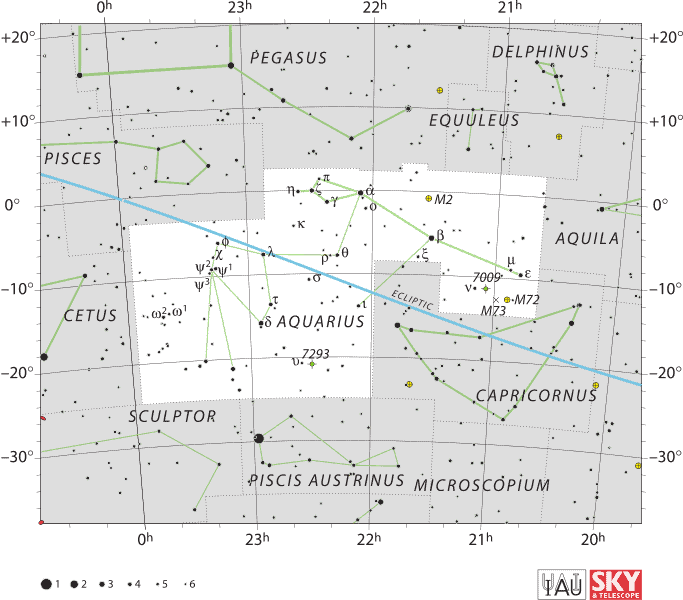
In old Babylonian astronomy, Ea was the ruler of the southernmost quarter of the Sun’s path, the “Way of Ea”, corresponding to the period of 45 days on either side of the winter solstice.
The constellation of Aquarius was also associated with the destructive floods that the Babylonians experienced regularly and thus was negatively connoted.
Location
The constellation of Aquarius is the 10th largest constellation in the sky. Aquarius spreads out for over 980 square degrees. The constellation of Aquarius is a bit difficult to spot since it has few bright stars.
However, Aquarius is best seen in the spring in the Southern Hemisphere and the fall in the Northern Hemisphere.
- Right Ascension: 22.71 hours
- Declination: -10.19 degrees
- Visible: between 65 degrees and -90 degrees
- Best viewed: During October at 9 p.m. / 21:00
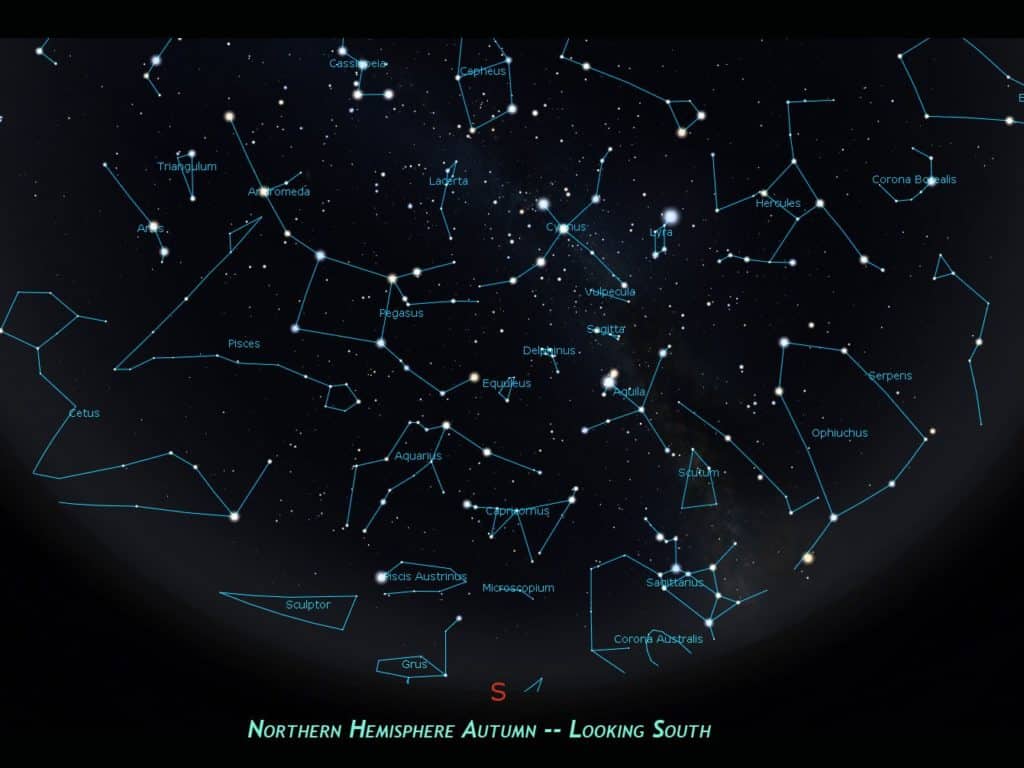
The constellation of Aquarius is located near other water-related constellations, such as Cetus (the Whale), Pisces (the Fish), Delphinus (the Dolphin), and Eridanus (the River), in what is often referred to as the water or sea section of the sky.
Messier Objects
In the constellation of Aquarius, there are only three Messier objects, they are the globular clusters Messier 2, Messier 72, and the open cluster Messier 73.
Messier 2
Messier 2, also designated as NGC 7089 is a globular cluster, located at five degrees north of the star Beta Aquarii / Sadalsuud – the brightest star in Aquarius.
It was discovered in 1746 by astronomer Jean-Dominique Maraldi, and it is one of the largest known globular clusters having a diameter of 175 light-years, and a radius of 87.3 light-years.
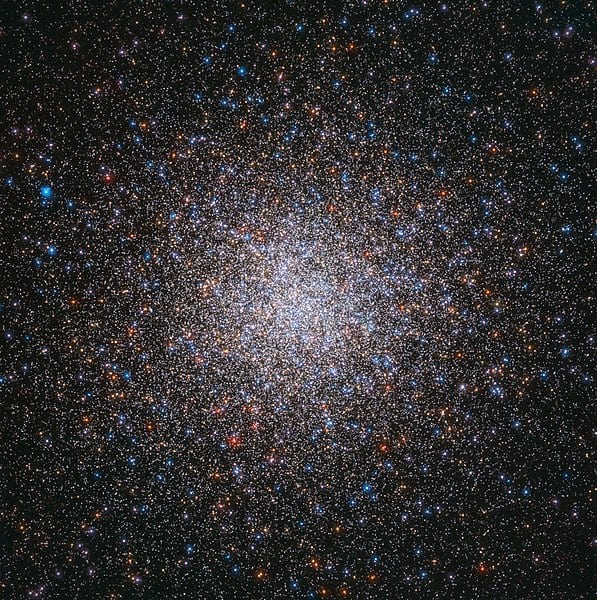
Messier 2 is at around 55,000 light-years away from Earth, and it is 13 billion years old, being one of the older globular clusters associated with the Milky Way.
Messier 2 contains around 150,000 stars, including 21 known variable stars. The brightest stars in Messier 2 are red and yellow giants, with their overall spectral type being F4. The apparent magnitude of Messier 2 is +6.3, under favorable conditions it can be visible to the naked eye.
Binoculars or a small telescope will identify this cluster as non-stellar, while larger telescopes will resolve individual stars, of which the brightest are of apparent magnitude 13.1.
Messier 72
Messier 72, also designated as NGC 6981, is a globular cluster discovered in 1780 by French astronomer Pierre Mechain. The apparent magnitude of Messier 72 is 9.35 – it is visible as a faint nebula in a telescope with a 6 cm / 2.4 in the aperture.
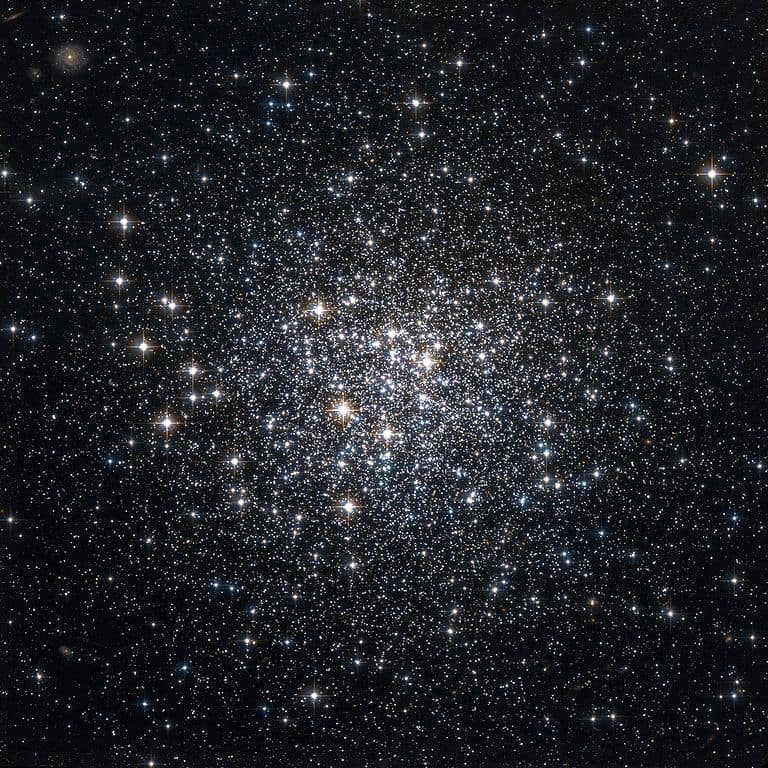
Messier 72 is located at around 54.57 light-years / 16.73 parsecs away from the Earth. It is around 168,000 times more massive than our Sun, being around 9.5 billion years old.
The core region of Messier 72 has a density of stars that are radiating 2.26 times the luminosity of the Sun per cubic parsec. There are 43 currently known variable stars in this cluster.
Messier 73
Messier 73, also designated as NGC 6994, is an asterism of four stars in the constellation of Aquarius. Messier 73 was first discovered by Charles Messier in 1780.
It was first described as a cluster of four stars with some nebulosity, however, the nebulosity was never discovered. John Herschel noted that the designation of M73 is a cluster was questionable.
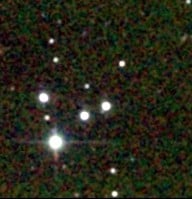
This asterism has an apparent magnitude of 2.8, being visible to the naked eye under the right conditions. Messier 73 is located at around 2,500 light-years / 770 parsecs away from Earth.
Notable Stars
The constellation of Aquarius, despite its size, has no particularly bright stars. The two brightest stars in Aquarius, Alpha Aquarii, and Beta Aquarii are luminous yellow supergiants, of spectral types G0lb and G2lb.
The two stars are moving perpendicular to the plane of the Milky Way. Beta Aquarii /Sadalsuud is the brightest star in Aquarius, having an apparent magnitude of 2.87.
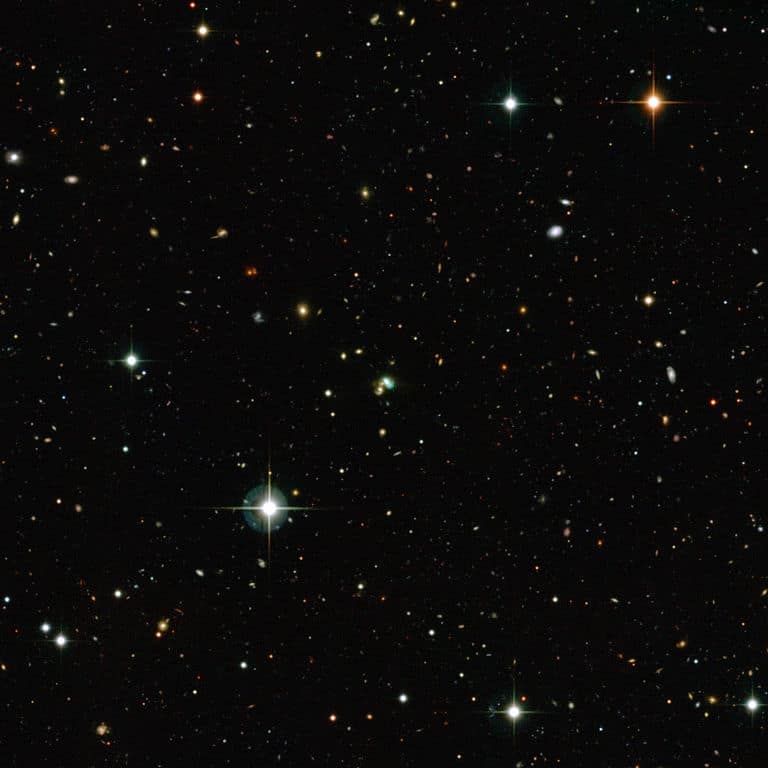
Beta Aquarii is 2,046 times brighter than our Sun, having 497% of our Sun’s mass, and around 4700% of its radius. The star is a few degrees cooler than our Sun, having average surface temperatures of around 5,608 K.
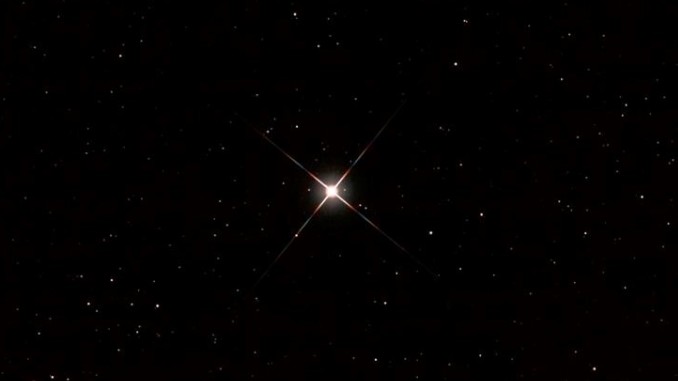
Alpha Aquarii / Sadalmelik is the second-brightest star in Aquarius, being 2,120 times brighter than our Sun, but more of its light is emitted in the invisible ultraviolet part of the spectrum than Beta Aquarii.
Alpha Aquarii has an apparent magnitude of 2.94, having 513% of our Sun’s mass, and around 5289% of our Sun’s radius. This star is also cooler than our Sun, having average surface temperatures of around 5,383 K.
The top 10 brightest stars in the constellation of Aquarius are:
1.Beta Aquarii – Sadalsuud – apparent magnitude 2.8
2.Alpha Aquarii – Sadalmelik – apparent magnitude 2.9
3.Delta Aquarii – Skat – apparent magnitude 3.3
4.Zeta Aquarii – apparent magnitude 3.65
5.Lambda Aqaurii – Hydor – apparent magnitude 3.72
6.Epsilon Aquarii – Albali – apparent magnitude 3.77
7.Gamma Aquarii – Sadachbia – apparent magnitude 3.8
8.Theta Aquarii – Ancha – apparent magnitude 4.1
9.Pi Aquarii – Seat – apparent magnitude 4.57
10.Xi Aquarii – Bunda – apparent magnitude 4.7
11.Kappa Aquarii – Situla – apparent magnitude 5.03
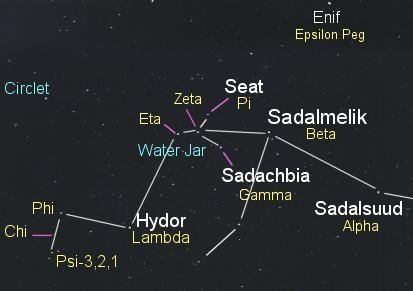
Planetary Systems
Currently, there are around twelve known stars in Aquarius that host planets, as of 2013. Gliese 876 is among the nearest stars to Earth (15 light-years) to possess a planetary system.
It is the first red dwarf star discovered to host planets. Gliese 876 has four planets, including one terrestrial planet that has 660% the mass of Earth.
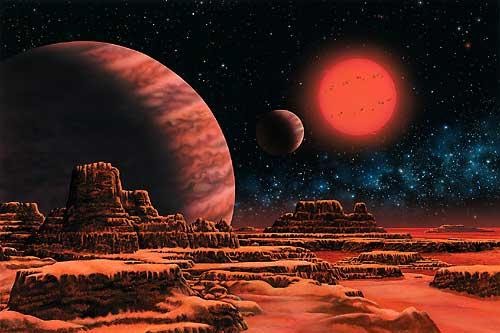
An orange giant star, 91 Aquarii, is orbited by one exoplanet that has 290% of Jupiter’s mass, and its orbital period is 182 days. Gliese 849 is a red dwarf star orbited by the first known long-period Jupiter-like planet.
In 2017, NASA announced that the ultracool dwarf star TRAPPIST-1 has seven Earth-like terrestrial planets. Three of these planets are situated in the system’s habitable zone and may contain water.
TRAPPIST-1
The discovery of the TRAPPIST-1 planetary system is seen by astronomers as a significant step toward finding life beyond Earth. TRAPPIST-1 is only 40 light-years / 12 parsecs away from Earth.
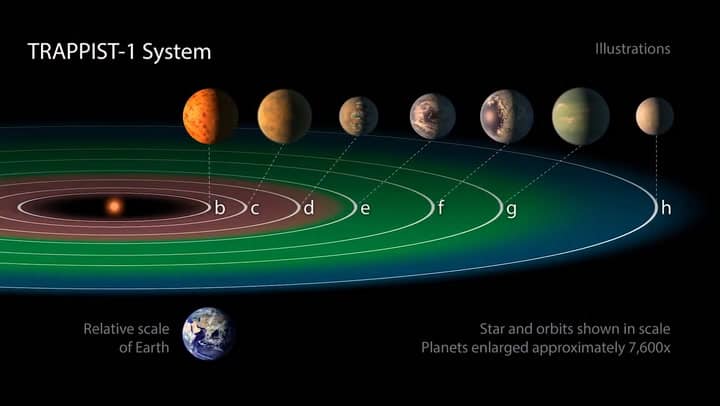
Since TRAPPIST-1 is only 8% the size of our Sun, its habitable zone is much closer to the star. All of the seven discovered planets orbit closer to their parent star than Mercury in our solar system does.
In 2018, researchers determined that the planet designated as “e” is the most likely Earth-like ocean world and may be an excellent choice for further study with habitability in mind.
Other Deep-Sky Objects
Since the constellation of Aquarius is situated away from the galactic plane, the majority of deep-sky objects situated there are galaxies, globular clusters, and planetary nebulae.
Besides the aforementioned globular clusters, observes may be intrigued by the several planetary nebulae located in Aquarius such as the ones below:
Saturn Nebula
The Saturn Nebula, also designated as NGC 7009, is a planetary nebula that appears greenish-yellow in small amateur telescopes. It was discovered in 1782 by astronomer William Herschel.
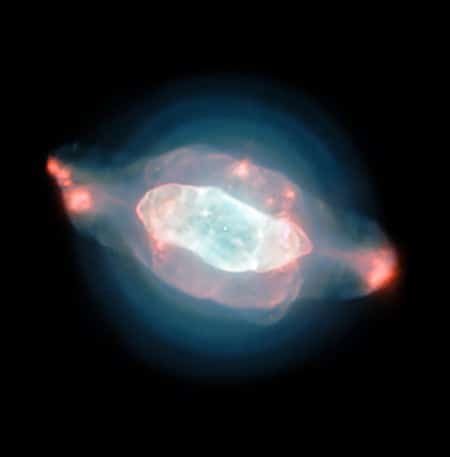
The Saturn Nebula was originally a low-mass star that ejected its layers into space forming the nebula. The remnant-central star is now a bright white dwarf, having an apparent magnitude of 11.5.
The nebula was named after Saturn due to its superficial resemblance. The apparent magnitude of the nebula is 8.0, having a radius of 0.2 to 0.4 light-years.
Helix Nebula
The Helix Nebula, also designated as NGC 7293, is a planetary nebula discovered by Karl Ludwig Harding probably before 1824. It is one of the closest bright planetary nebulae to Earth, at a distance of 650 light-years / 200 parsecs.
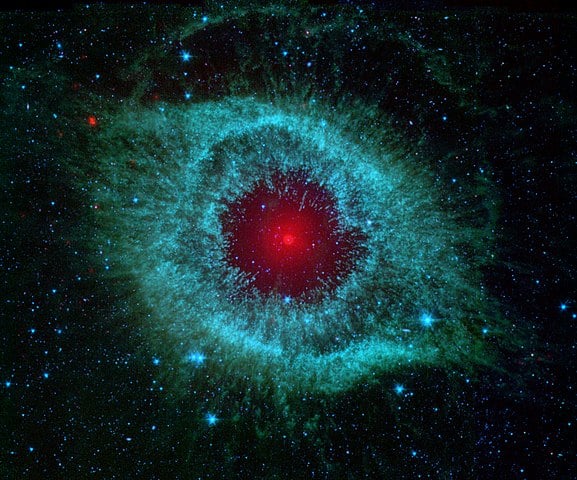
The Helix Nebula has an apparent magnitude of +7.6, and a radius of around 2.87 light-years / 0.88 parsecs. It is similar in appearance to the Cat’s Eye Nebula or the Ring Nebula, whose size, age, and physical characteristics are similar to the Dumbbell Nebula.
In pop culture, the Helix Nebula has been referred to as the Eye of God, as well as the Eye of Sauron. The Helix Nebula was formed from an intermediate low-mass star, which is on its way into becoming a white dwarf.
Galaxies
Among the visible galaxies in Aquarius is NGC 7727, which is often observed by amateur astronomers who wish to discover or observe supernovae.
NGC 7727 is a spiral galaxy located at around 76 million light-years / 23.3 megaparsecs away from the Milky Way. It has an apparent magnitude of 11.5.
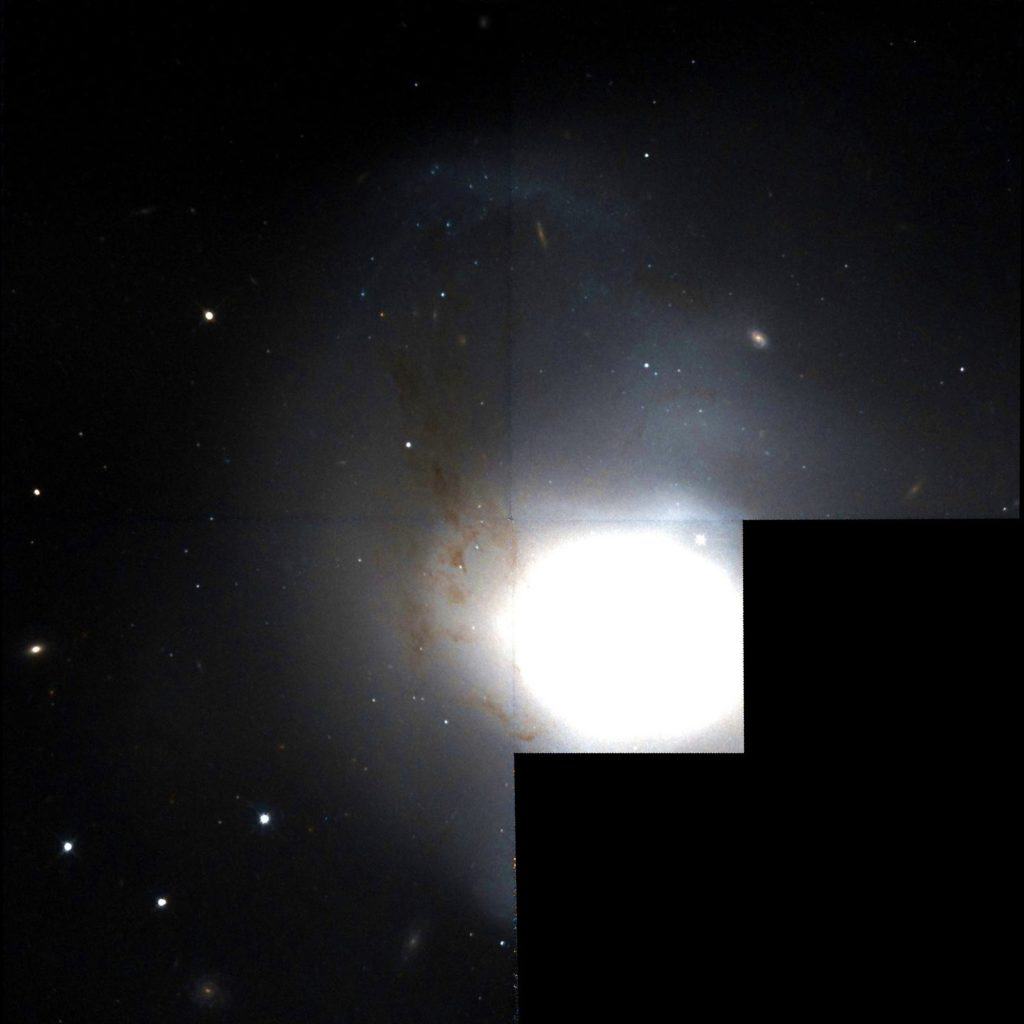
NGC 7727 is believed to be the product of two previous spiral galaxies that merged around 1 billion years ago. Many theorize that NGC 7727 will become an elliptical galaxy in the future, with very little interstellar dust and star formation.
Meteor Showers
Three meteor showers appear to come from the direction of the constellation of Aquarius. They are the Eta Aquariids, the Delta Aquariids, and the Iota Aquariids.
Eta Aquariids
The Eta Aquariids are the strongest meteor shower radiating from Aquarius. It peaks between 5 and 6 May with a rate of about 35 meteors per hour.
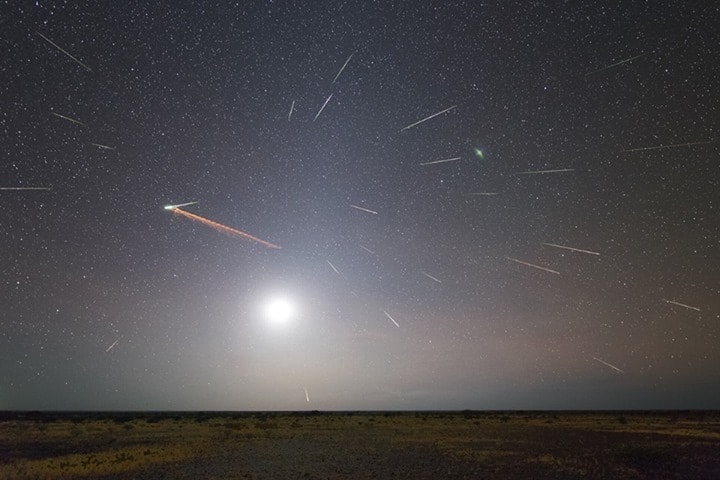
The parent body of the shower appears to be Halley’s Comet, a periodic comet. Fireballs are common shortly after the peak, between 9 and 11 May.
Delta Aquariids
The Delta Aquariids is a double radiant meteor shower that peaks first on 29 July and second on 6 August. The first radiant is located in the south of the constellation of Aquarius, while the second radiant is located in the northern circlet of the Pisces asterism.
The southern radiant’s peak rate is around 20 meteors per hour, while the northern radiant’s peak is about 10 meteors per hour.
Iota Aquariids
The Iota Aquariids is a fairly weak meteor shower that peaks on the 6th of August, having a rate of approximately 8 meteors per hour.
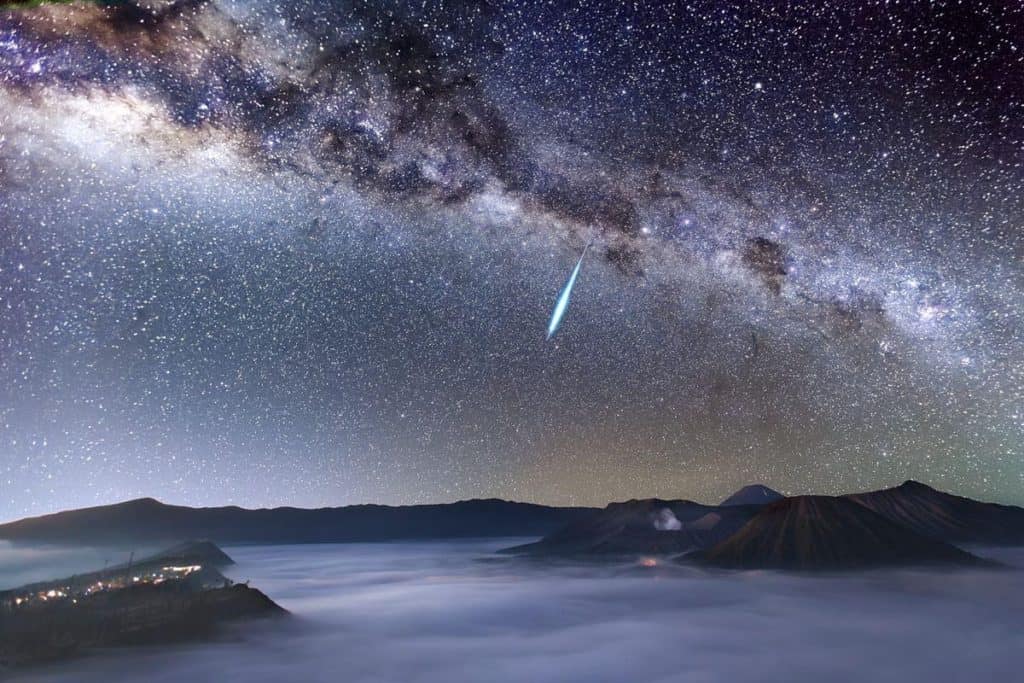
Mythology
The ancient Greeks linked the constellation of Aquarius with Ganymede, the cup bearer to the gods. In the Greek mythos, Ganymede was a good-looking young man who was the object of Zeus’ affection.
He was brought to Mount Olympus to serve as cupbearer to the gods and was thus granted eternal youth in exchange. The constellation of Aquarius has several meanings and associations in other cultures as well.
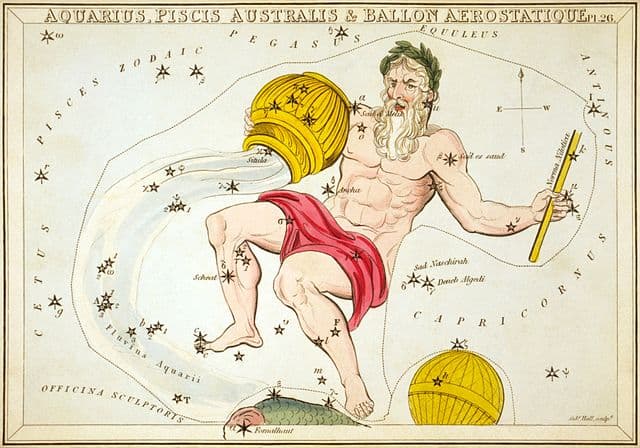
The Babylonian astronomers identified the constellation of Aquarius as representing the god Ea, which was often depicted with an overflowing vessel.
Astrology
In astrology, Aquarius is the 11th sign in the Zodiac and it represents those born between January 20, and February 18. As of 2002, the Sun appears in the constellation of Aquarius from 16 February to 11 March.
In tropical astrology, the Sun is considered to be in the sign Aquarius from 20 January to 19 February, and in sidereal astrology, from 15 February to 14 March.
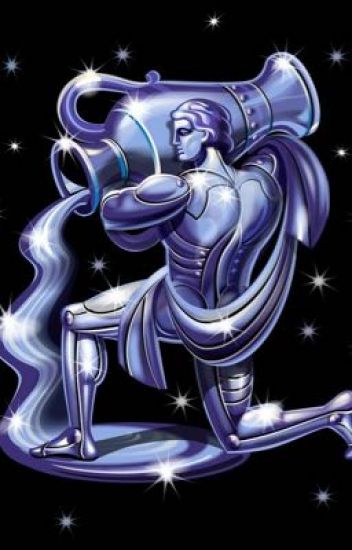
Aquarius is also associated with the Age of Aquarius, a concept popular in the 1960s counterculture. Despite this prominence, the Age of Aquarius will not dawn until the year 2597, as an astrological age does not begin until the Sun is in a particular constellation on the vernal equinox.
Did you know?
- The ancient Egyptians considered the water bearer’s jaw the cause of the spring overflow of the Nile when it was dipped into the river.
- The Chinese astronomers viewed the “stream” – the stream of water flowing from the Water Jar - as soldiers – the Army of Yu-Lin. In astronomy, the constellation was the most numerous in regards to stars.
- In the Greek tradition, the constellation came to be represented simply as a single vase from which a stream poured down to Piscis Austrinus.
- The name in the Hindu zodiac for Aquarius is Kumbha – “water pitcher”.
Sources:
Image sources:
- https://upload.wikimedia.org/wikipedia/commons/thumb/9/9c/Aquarius_IAU.svg/683px-Aquarius_IAU.svg.png
- https://www.thoughtco.com/thmb/EEyclUgqBxoRZbEi4QdJ3h9lz9k=/1341x1006/smart/filters:no_upscale()/14_northern_hemisphere_autumn_looking_south-59e6b6c4685fbe00111710f3.jpg
- https://upload.wikimedia.org/wikipedia/commons/thumb/d/d6/Messier2_-_HST_-_Potw1913a.jpg/597px-Messier2_-_HST_-_Potw1913a.jpg
- https://upload.wikimedia.org/wikipedia/commons/thumb/7/71/M72_Hubble_WikiSky.jpg/768px-M72_Hubble_WikiSky.jpg
- https://upload.wikimedia.org/wikipedia/commons/c/c2/Messier_073_2MASS.jpg
- https://upload.wikimedia.org/wikipedia/commons/thumb/7/74/The_green_bean_galaxy_J2240.jpg/768px-The_green_bean_galaxy_J2240.jpg
- https://www.astronomytrek.com/wp-content/uploads/2017/06/Sadalsuud-Star.jpg
- https://alchetron.com/cdn/beta-aquarii-3975f546-90df-4da9-8481-38ee73063d8-resize-750.jpeg
- https://lh3.googleusercontent.com/proxy/LaU6B1cIPOv99Zp9enLxd1cIgXdXF1tFNNzRJ_owuE0bwXkQI02TOINsuEX8DuPWGWn01qDydLtx2ROma5yR6UbsueNtfnYku2qixBk
- https://assets-jpcust.jwpsrv.com/thumbnails/0an3mgjj-720.jpg
- https://upload.wikimedia.org/wikipedia/commons/thumb/c/c9/MUSE_image_of_the_Saturn_Nebula.jpg/450px-MUSE_image_of_the_Saturn_Nebula.jpg
- https://upload.wikimedia.org/wikipedia/commons/thumb/7/7f/Comets_Kick_up_Dust_in_Helix_Nebula_%28PIA09178%29.jpg/577px-Comets_Kick_up_Dust_in_Helix_Nebula_%28PIA09178%29.jpg
- https://upload.wikimedia.org/wikipedia/commons/1/12/NGC_7727_Hubble_WikiSky.jpg
- https://earthsky.org/upl/2013/05/meteors-Eta-Aquarids-composite-Colin-Legg-5-6-2013.jpg
- https://cdn.mos.cms.futurecdn.net/ncUKmb9sZ9zmzkmRRwEv8f-1200-80.jpg
- https://upload.wikimedia.org/wikipedia/commons/thumb/5/5c/Sidney_Hall_-_Urania%27s_Mirror_-_Aquarius%2C_Piscis_Australis_%26_Ballon_Aerostatique.jpg/640px-Sidney_Hall_-_Urania%27s_Mirror_-_Aquarius%2C_Piscis_Australis_%26_Ballon_Aerostatique.jpg
- https://a.wattpad.com/cover/58066560-352-k118442.jpg
